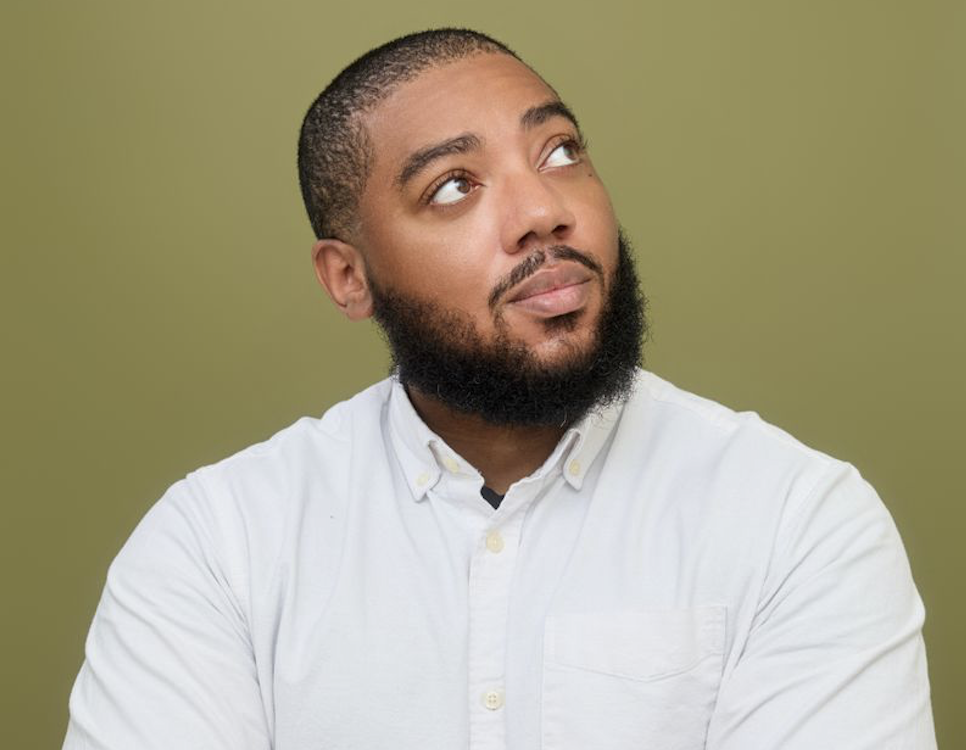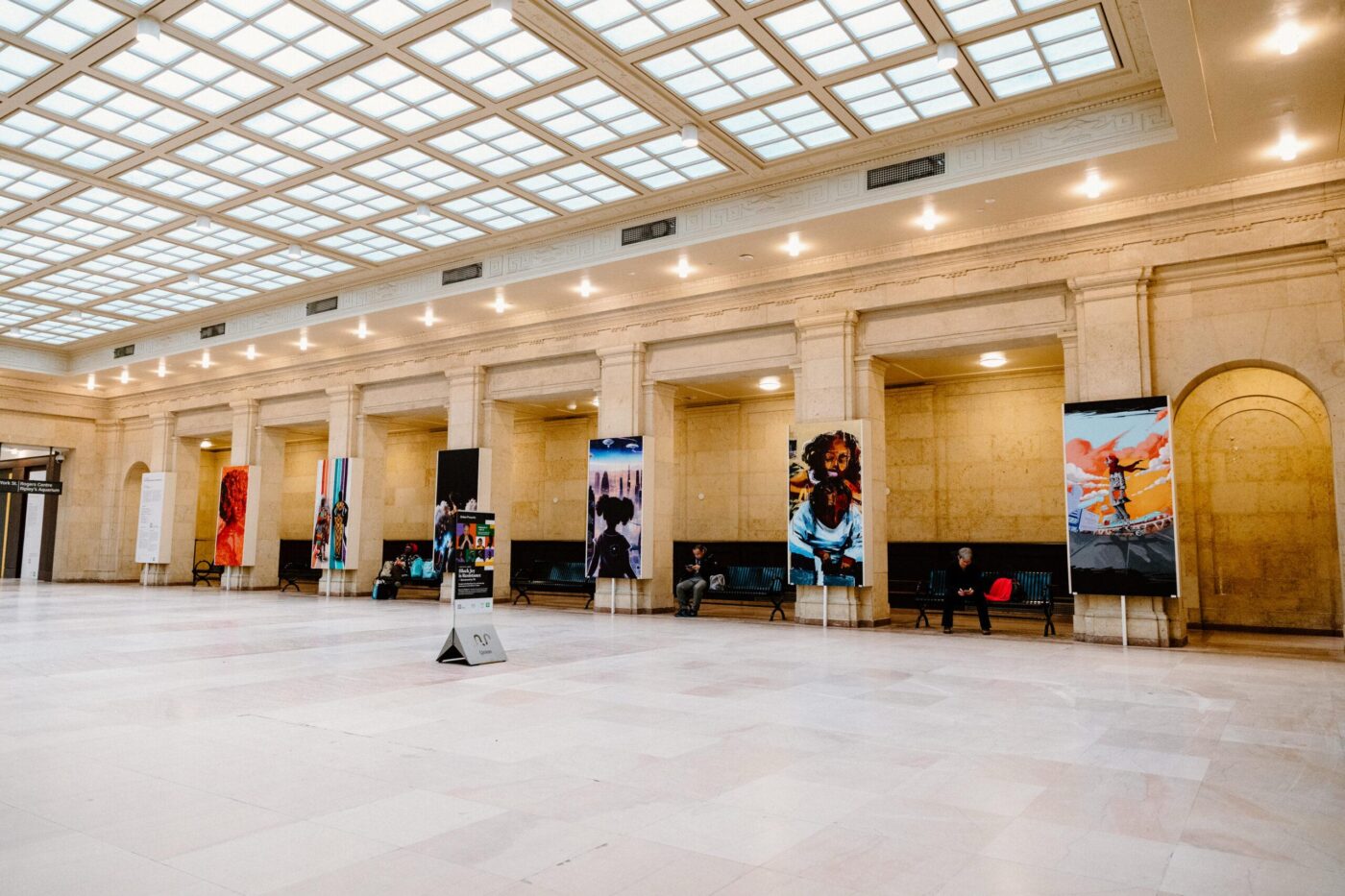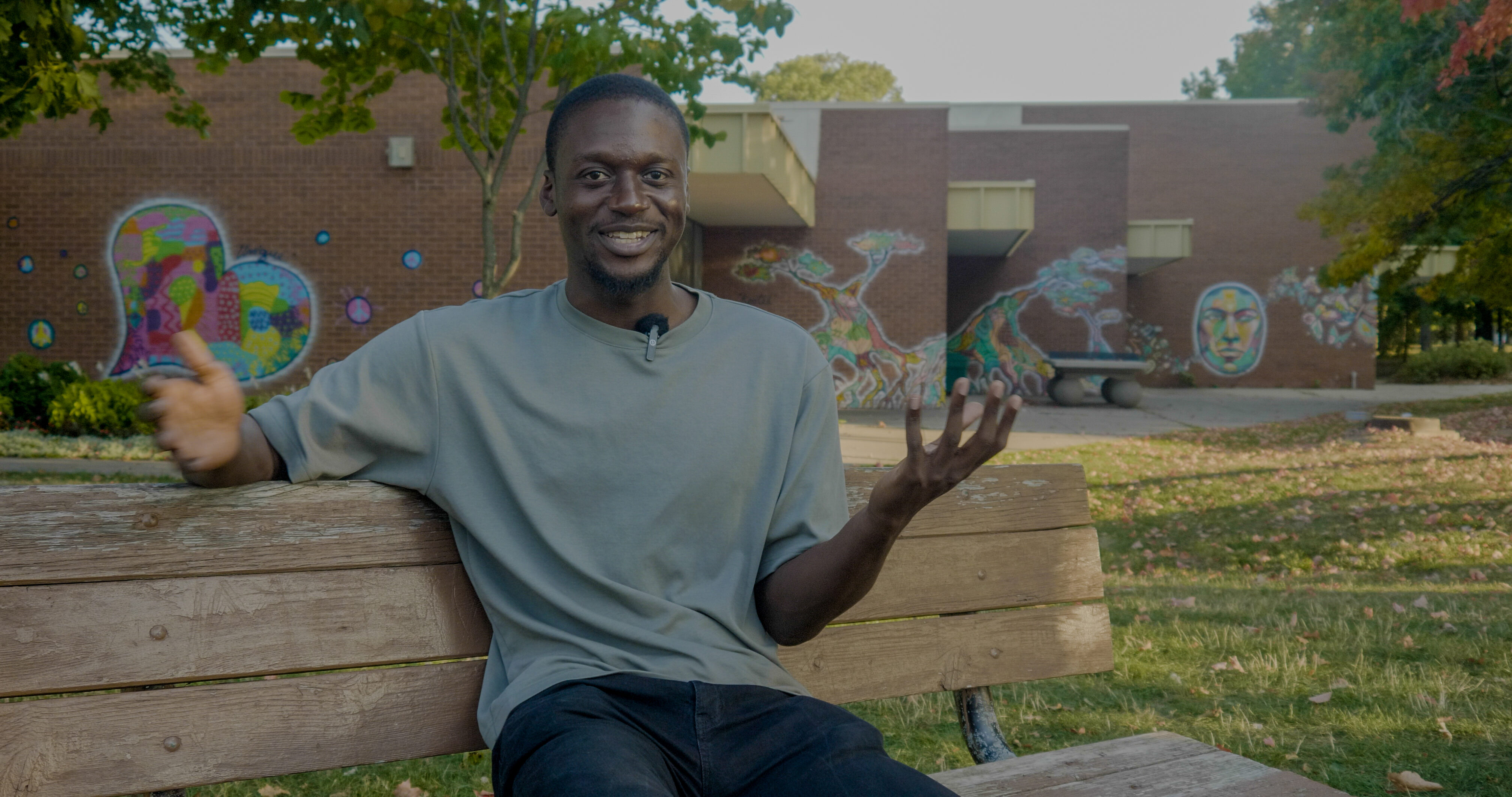THE GREEN LINE'S
CHANGEMAKER INTERVIEW
How this social enterprise is making room for emerging racialized artists in Toronto
For our November 2025 Changemaker interview, we speak with MakeRoom Inc. founder Trevor Twells about how his curatorial agency is combatting nepotism and gatekeeping in the art industry.

TREVOR TWELLS, FOUNDER OF MAKEROOM INC.


SEBASTIAN TANSIL
Caring mastermind based in Kensington-Chinatown who loves spending quality time with friends and family. Empathetic and precise economist by training. Loves amber yellow as it reminds him of people dearest to him.

Mary Newman
British-Canadian journalist with a decade’s experience producing for the BBC and CBC. Hails from Robin Hood country so naturally hates wealth inequality and loves organized labour. Now resides in the dog paradise of Roncesvalles.
Nov. 14, 2025
This interview is part of Documenters Canada, which is partly funded by the Social Sciences and Humanities Research Council of Canada (SSHRC). Learn more about our program here. The Green Line maintains full editorial independence to ensure journalistic integrity.
Art plays a crucial role in building communities and preserving culture. However, being a visual artist in Toronto can be full of economic uncertainty.
In 2021, Ontario artists made below $30,000 per year, according to a study by Hill Strategies based on census data — that’s over $20,000 less than the average worker in the province. Although wages have increased over the past four years, artists — especially those entering the industry from low-income racialized communities — are struggling.
For our November 2025 Changemaker interview, we speak to MakeRoom Inc. founder Trevor Twells about how the curatorial agency is trying to transform the industry.
How did MakeRoom start out?
A decade ago when I started as an artist, I faced a lot of gatekeeping while trying to get my first exhibit off the ground. A lot of applications were asking me to sell my trauma as a Black artist or to connect my art to my culture in order to validate it. I've been told by a couple of institutions when I was first starting, “Could you connect us to your culture?” or “Hey, this doesn't seem Black enough.”
So instead of going through the granting system of the galleries, I started to gather my money from my near-minimum wage job. I rented a gallery space and ran my own solo exhibits. And luckily for me, it got on the news.
After that, I didn't have to pay for my own exhibits anymore. But my peers, especially those who look like me, were going through the same struggles I faced. So that's what prompted me to start MakeRoom in 2019.
What was your experience growing up in Scarborough in terms of access to the arts and creative spaces?
There are papers on how the education system can be a “school-to-prison pipeline” for racialized students.
The arts weren’t really seen as a viable pathway to build off of. And, you know, schools in Scarborough didn't really set their students up for success in their career. And it wasn't until I started heading downtown, seeing other creatives, that I realized that this was a viable option.

MakeRoom Inc. founder Trevor Twells (left hand side) speaking on a panel.

What are the biggest barriers emerging BIPOC artists face in the city?
There's a severe lack of space for these artists to exhibit their work. Many community spaces have shut down in the past six years, mainly due to rental costs and COVID-19. And with that lack of space is a lack of community and support. There aren't many third spaces for artists to create community. Artscape was a huge example that shut down not too long ago.
The other thing is gatekeeping, which is still a problem in the arts. It's especially true for emerging artists without connections. Many exhibit opportunities are closed off to them because they're not advertised. Emerging artists may never hear about opportunities. This also goes to the other point, where there's a lack of education around artist pathways, like exhibiting, gallery representation, public art proposals, fairs and private collections, or sales. I think there needs to be more artist outreach.
For BIPOC artists, especially, there's this expectation that their works tie into their cultural background. Whereas artists who aren't BIPOC can kind of just get away with doing whatever they want to.
The other thing is having a steady income. There's this statistic that I always go back to where in 2021, the median income for artists [in Ontario] was recorded at under $30,000. For one of the most important professions, they are some of the most vulnerable. Artists are very much leaving the city due to high cost of living or quitting being artists because they can't afford healthcare.
And then corporate funding for the arts has also dropped. Major sponsors have dropped out from cultural programming. There's also a steep decline in DEI initiatives for corporations and some are doing away with it altogether.
Being an artist is financially draining. And this is why I commend anyone who chooses to become an artist, because it's beyond a calling. It's something that's very important to shaping the culture of the city.
What does success look like to you?
Success to me is changing the landscape of public art and redesigning how opportunities are facilitated and executed. There's so much wrong in the state of how artists get opportunities and we want to fundamentally change that.
We want to make a radical transparency model that we've been using and spread it throughout institutions, throughout arts organizations and throughout cities.
The majority of our public opportunities are open calls, so artists know exactly what the selection criteria is [and] how much they'll get paid. And we don't really care about your past experience. We only care about the art within the context of the call.
We invite artists and curators in the community to participate in the curation process, as well as our institutional partners. So this means that we have a diverse set of tastes and backgrounds that are not just ours. We want to democratize, we don't want everything to be, like, just our taste. I find that with space making, you get stuck with a certain curator's signature. I don't want that. I want everything to be open.
We partnered with Md Gallery, which is a private gallery. It's one of the first Black-owned galleries in Yorkville. And we designed a workshop with artists to research how to best sell their work, and it turned out to be very successful. We actually sat down, did a workshop with them, heard their needs and problems and figured out how to solve them. And I think that municipalities and institutions should take that same approach.
I think success for MakeRoom is influencing that and maybe even carrying it out. And then, of course, more partnerships with large institutions and municipalities, where we democratize how art is displayed and give artists access to space.
There's been talk at City Hall about a cultural spaces action plan. From your perspective, are these programs by the City reaching the people who need them most?
I'm glad they're revamping or augmenting their cultural spaces action plan, especially since they took a community engagement approach and had a diverse panel of cultural leaders.
That said, I think it's too early to gauge how effective it will be. A pattern I see that emerges with these types of initiatives and outreach is normally a closed process in terms of partnerships. And, typically, the groups that have been receiving funding over the past model end up receiving just more funding, which leads to more of the same but bigger.
As for the Cultural Districts Program, I think it's a really interesting idea, and I'm glad they're using a community-generative approach for designing these districts. That said, when I was doing research on this, I did read some concerns regarding the power structures of, like, who gets to decide which culture a district represents.
The other thing I noticed is that Scarborough did feel a little bit left out of this plan. There's no guarantee they'll be included despite a rich cultural heritage and how underserved it is right now within the arts. I've been doing this mentorship program where I'm mentoring kids. Some of them are from Scarborough, and they wanna do exhibits, etc. And they're like, “I can't find any arts orgs that will help me.”

MakeRoom Inc. partnered with Union Station to display the "Black Art Exhibit - A Transit Through Time" in the West Wing.

What’s your advice to young BIPOC artists who are just starting out?
Connect with creatives in your circle and build with them. The limited resources in the city could make it feel like there's a competition, but there's so much more when you're building together.
How can Torontonians support local artists?
One of the easiest ways is to look beyond the major arts institutions and seek out local galleries and cultural events that actually feature artists from the city. Even though many independent spaces have had to close because of affordability issues, there are still incredible independent galleries showing incredible work.
Another important way to support is by applying pressure to major arts institutions to make their programming more inclusive. Torontonians can push for these institutions to champion diverse and emerging local artists in real, visible and internationally recognized ways.
How can people find out more about MakeRoom and your work?
They can go on our website, to see our current open calls, sign up for email notifications and go to @makeroominc on Instagram.

Artscape’s residential building on West Queen West was the first legally zoned artist live/work space in Toronto.

Our Documenter's local perspective
Over the past few years a number of historic venues have closed their doors, including The Dakota Tavern on Ossington, The Velvet Underground and The Beaver, both on Queen Street West.
On Oct. 23, 2024, Tansil helped former Documenter Eugene Slonimerov cover a public meeting where the Economic Community Development Committee discussed the “Soundcheck Project” — a City initiative to protect Toronto’s live music venues. The Toronto Music Advisory Committee gave a presentation that highlighted the struggles and disappearances of live music venues. Slonimerov noted that at the same time, there’s been a “slow disappearance of rooming houses and other housing that musicians could afford.”
Fast forward to Feb. 18, 2025 when Tansil documented a meeting by the Toronto Music Advisory Committee, which met to discuss ways to protect housing security for artists. This meeting happened at the time when hundreds of artists were at risk of losing their affordable housing after Artscape, the non-profit managing their buildings, went into receivership. During this meeting, artists also highlighted a Toronto Arts Council report that found creatives are struggling to afford living expenses, especially housing, in our city.
This made Tansil curious to hear from the founder of MakeRoom. Twells highlighted those same pressures facing emerging artists — especially those from low income racialized communities — and found a unique model to address some of these issues.
Fact-Check Yourself
Sources and
further reading
Don't take our word for it —
check our sources for yourself.
Care about our city, but don't know how to make it better? Sign up for simple, step-by-step guides to solving problems in your neighbourhood — one small action at a time.
